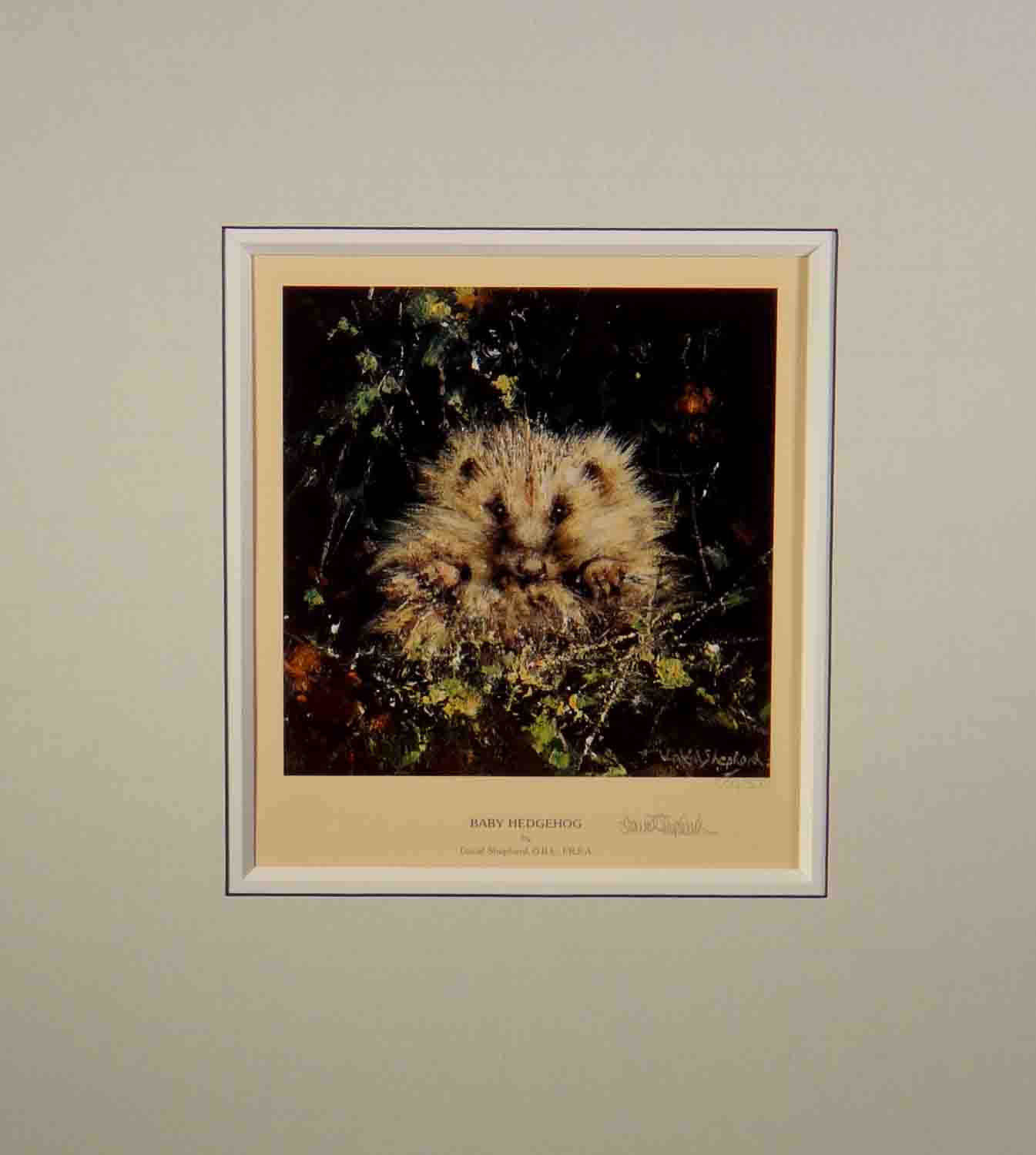Hedgehog
David Shepherd
CBE OBE FRSA FGRA
"Baby Hedgehog"
Signed Limited Edition print
Published 1993
Image Size:- 6" x 6"
In stock:- one complete with frame.
A hedgehog is any of the spiny mammals of the subfamily Erinaceinae, in the eulipotyphlan family Erinaceidae.
There are seventeen species of hedgehog in five genera found through parts of Europe, Asia, and Africa, and in New Zealand by introduction.
There are no hedgehogs native to Australia and no living species native to the Americas (the extinct genus Amphechinus was once present in North America).
Hedgehogs share distant ancestry with shrews (family Soricidae), with gymnures possibly being the intermediate link, and they have changed little over the last 15 million years.
Like many of the first mammals, they have adapted to a nocturnal way of life.
Their spiny protection resembles that of the unrelated porcupines, which are rodents, and echidnas, a type of monotreme.
Hedgehogs are easily recognized by their spines, which are hollow hairs made stiff with keratin.
Their spines are not poisonous or barbed and, unlike the quills of a porcupine, do not easily detach from their bodies.
However, the immature animal's spines normally fall out as they are replaced with adult spines.
This is called "quilling". Spines can also shed when the animal is diseased or under extreme stress.
Hedgehogs are usually brown, with pale tips to the spines, though blonde hedgehogs are found on the UK island of Alderney.
A hedgehog that feels threatened can roll into a tight ball.
All species of hedgehogs can roll into a tight ball in self-defense, causing all of the spines to point outwards.
The hedgehog's back contains two large muscles that control the position of the quills.
When the creature is rolled into a ball, the quills on the back protect the tucked face, feet, and belly, which are not quilled.
Since the effectiveness of this strategy depends on the number of spines, some desert hedgehogs that evolved to carry less weight are more likely to flee or attack,
ramming an intruder with the spines; rolling into a spiny ball for those species is a last resort. The various species are prey to different predators,
while forest hedgehogs are prey primarily to birds (especially owls) and ferrets, smaller species like the long-eared hedgehog are prey to foxes, wolves, and mongooses.